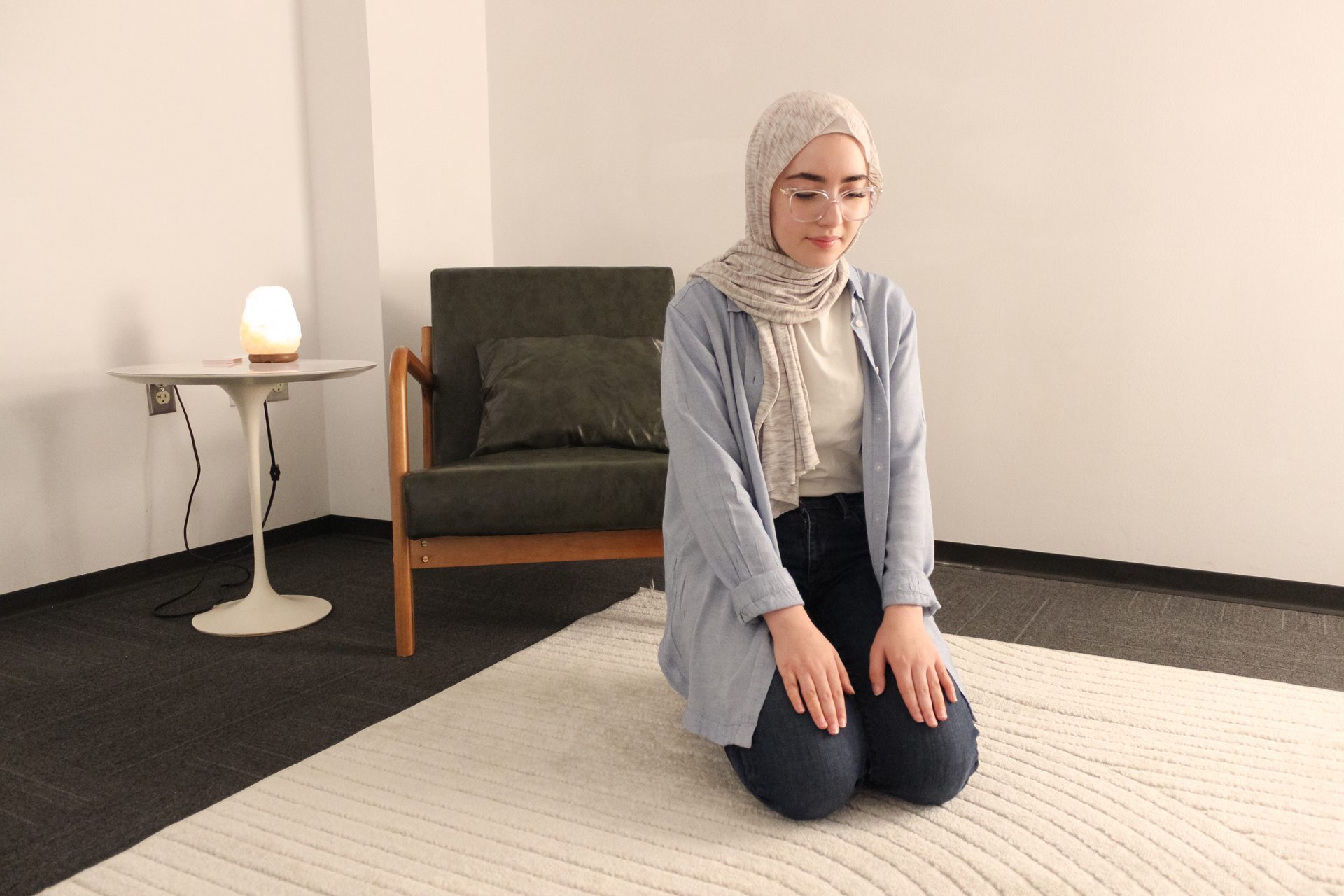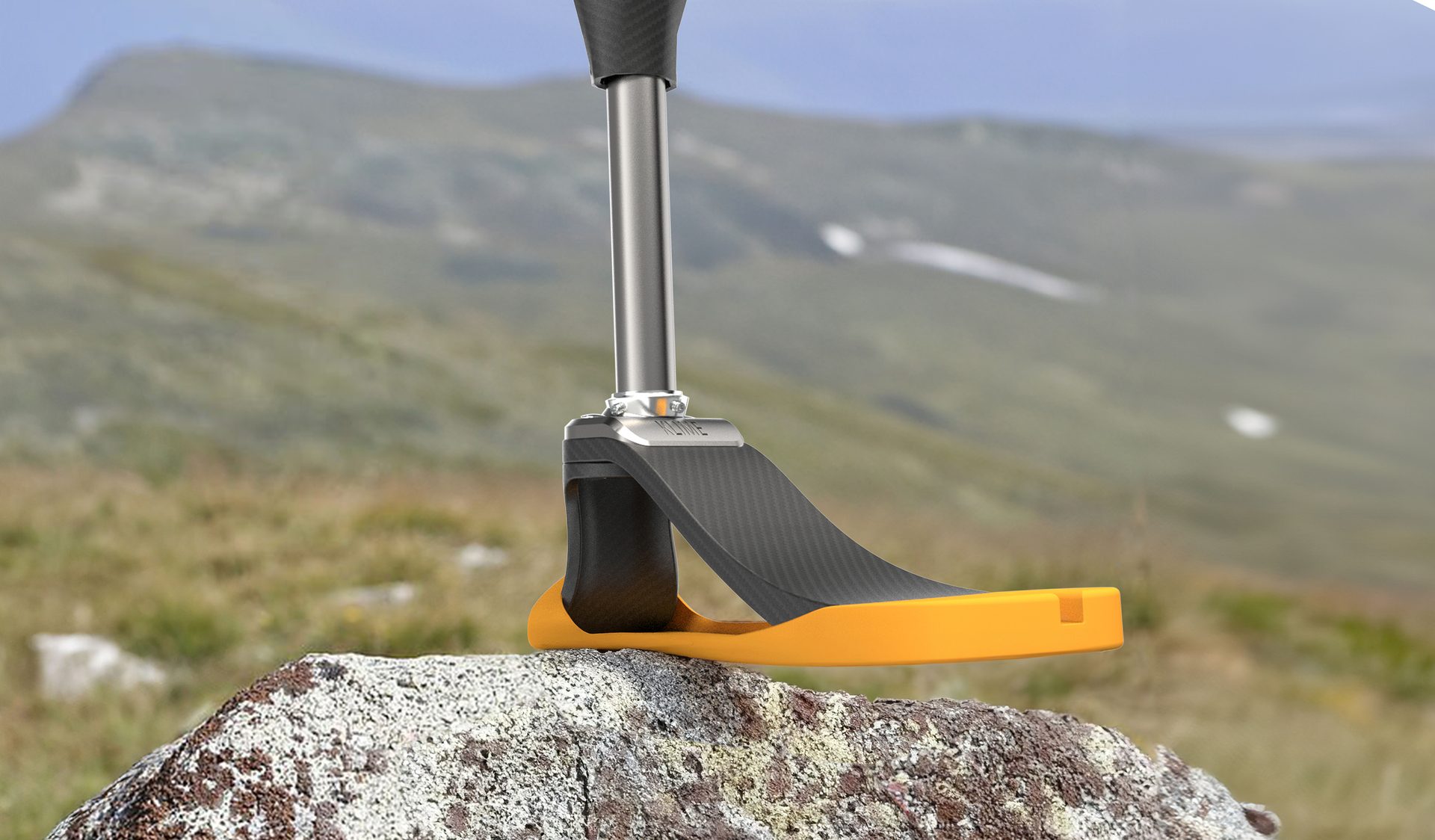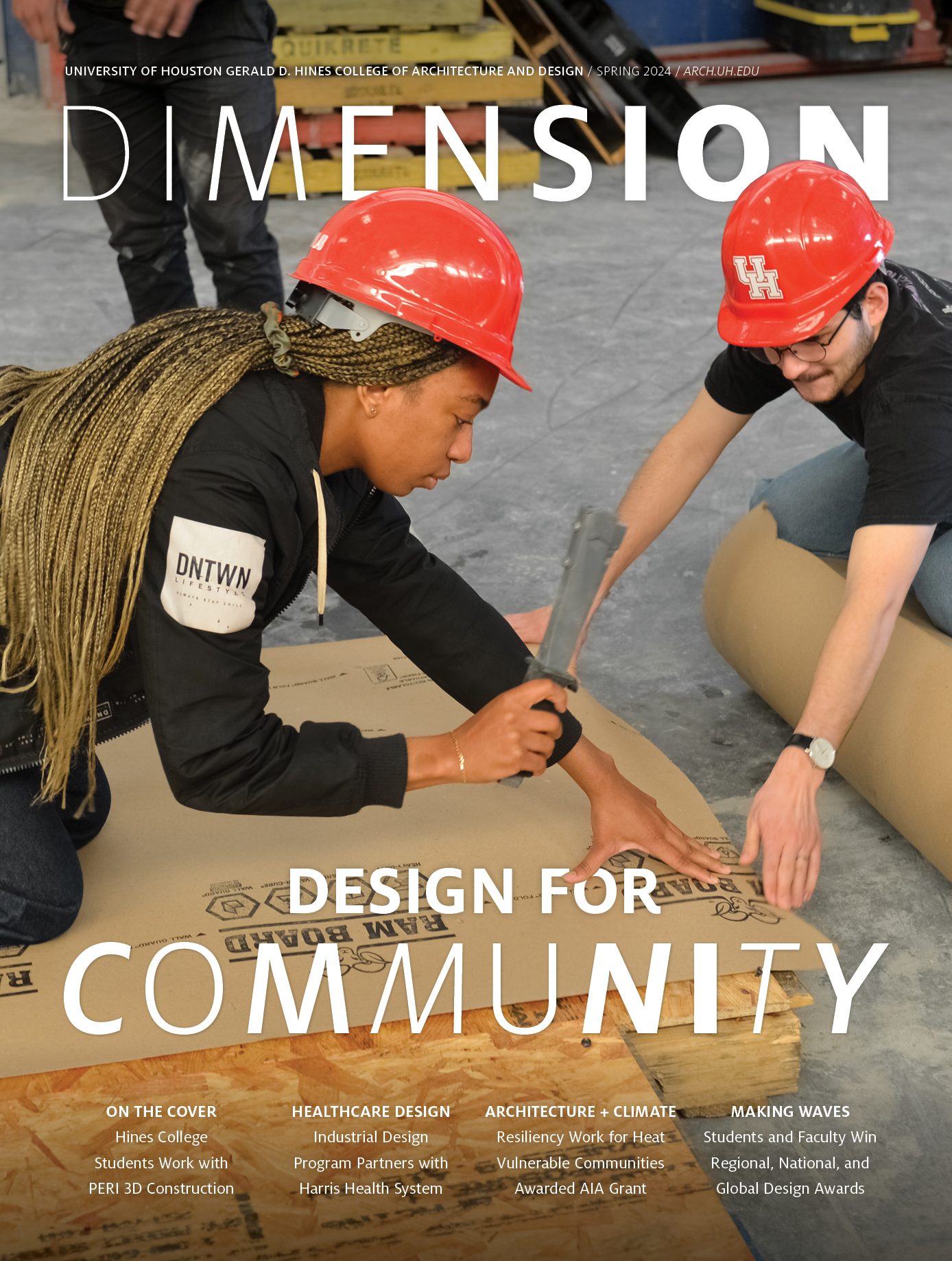In a city home to the largest medical center in the world and a Carnegie-designated Tier One research university, it is no surprise that students at the University of Houston Gerald D. Hines College of Architecture and Design experience hands-on opportunities in healthcare innovation.
Since partnering with the Harris Health System in 2018, the Hines College’s industrial design (ID) program students have worked with occupational therapy professionals from Harris Health. Through this partnership, students also collaborated with the Texas Woman’s University School of Occupational Therapy-Houston Center, providing technology and design expertise while occupational therapists contributed medical insight and helped navigate patient feedback and interaction.
Jeff Feng, assistant professor and co-director of the ID program, sought to establish this partnership so students could have a learning experience relying on research and close interaction with clients, in this case, patients.
“We are able to serve low-income patients in underserved communities through our partnership with Harris Health,” shared Feng. “With an occupational therapist’s scrutiny and approval, the successfully developed adaptive devices of our students are given to the patient at no cost.”
The program uses this joint effort to develop opportunities for students to design real devices with an immeasurable impact on people’s quality of life. Patients with limb differences encounter many barriers in accessing technologies, devices, and prosthetics that can help them achieve daily living tasks.
“Our collaboration has helped fill a need for the population we serve,” explained Nico Carrizales, a senior occupational therapist at Harris Health. “With narrow resources, coverage for some prosthetics and orthotics can be limited for our patients who only have medical coverage through Harris Health.”
Hines College industrial design partnership with the Harris Health System impacts underserved communities
by Nicholas Nguyen • June 4, 2024
above: Dr. F. Kay Brown, Nico Carrizales, Professor Jeff Feng, and Dr. Elham Morshedzadeh present the outcomes of the program at a UH Symposium; feng and students work together on a prototype
While students may receive educational benefits, Feng recognizes the primary beneficiaries of the ID program’s innovation are the patients it serves. It was important for the program to cultivate a relationship with a local organization, like Harris Health, striving to offer patients the same opportunities they would receive at any other major healthcare system in the Houston area.
“As therapists, we mentor the students, informing them about the clients and how best to include them in their choice of assistive technology,” shared Dr. F. Kay Brown of Harris Health. “I have seen the students come to better understand how the occupational therapy clients live and work.”
Each project relies heavily on research, which includes prototyping. For example, students learned how to use technologies to 3D scan and print their design models to test their effectiveness. Feng stresses to students that their design must work and go beyond simply sketching up ideas and creating “cool renderings.” Failure is a part of the process because it allows students to identify the gaps in their design’s functions and where they may fall short of their patients’ needs.
Most recently, graduate David Edquilang (B.S. I.D. ’22) developed Lunet alongside Harris Health. His 3D printable and adaptable hand prosthesis won the prestigious international 2023 Red Dot Luminary Award. Edquilang plans to make Lunet’s design open source and available for free.
Samuel Charbula (B.S. I.D. ’24) worked on a project to assist people with spastic hand disabilities. Patients with spastic muscle problems sometimes involuntarily clench their hands and are unable to uncurl their fingers and use them. Charbula is working on a design inspired by existing hand splints and zip ties and is looking for ways of scaling his work for children and adults.
above: a prototype of edquilang's award-winning prosthetic, lunet, fitted on patient; burlison works with a young patient under the guidance of an Occupational Therapist and Feng
Fourth-year student Brandon Burlison, feels his understanding of industrial design has evolved through this interaction with Harris Health. Learning that he could use his skills and talents to make an impact has highlighted ways the design process can make a difference in patients’ lives. For example, Burlison scans his patients' hands to create models that fit their measurements, reducing the amount of time he needs his patients to be physically present to try on different iterations. This saves both parties time and expenses.
“I have walked away with the realization that design can do much more than make an object look pretty,” Burlison shared. “I have really learned there's beauty in helping others, and design is just the medium we are using to do it.”
While ID students had much to learn about healthcare design and working with patients, their mentors also gained new insight. Dr. Brown thought it was fascinating to see how students brought their ideas to life. She also enjoyed watching students give presentations about their work.
Dr. Elham Morshedzadeh, an assistant professor at Hines College who focuses on healthcare design, sees the program continuing to grow and exploring more areas where industrial design can have a lasting impact. She believes the partnership with Harris Health is an avenue for designing solutions as systems through community-based research to improve public health.
“Besides current projects, we see a great opportunity to improve post-acute care and build stronger communication between Harris Health and the involved communities,” said Morshedzadeh. “This approach can help them investigate more sustainable and long-term solutions leading to community empowerment.”
Feng hopes this collaboration will provide more partnership opportunities for the Hines College in the future. In the meantime, he wants the ID program to engage more students and reach more patients. This real-life engagement between students and patients has been a rewarding opportunity for students to engage the world as responsible citizens
Get the Scoop
This story was first published in the spring 2024 issue of DIMENSION Magazine. Read the magazine.
More College of Architecture and Design Stories

The University of Houston and Hines College have expanded their efforts to better support their community and provide the resources needed to improve mental health and well-being. Read about how our community creates meaningful spaces and programs to advance mental health at the College.

A hobby in photography led recent Hines College graduate Felipe Harker (B.Arch. ’24) to find a way to document memories on campus and create a community online through the Instagram account, @UHCloseUp.

Hines College industrial design students have earned recognition for the second year in a row for the FIT Sport Design Awards. The program recognizes professional and student designers across many categories including apparel and equipment for innovation, performance, and sustainability.






